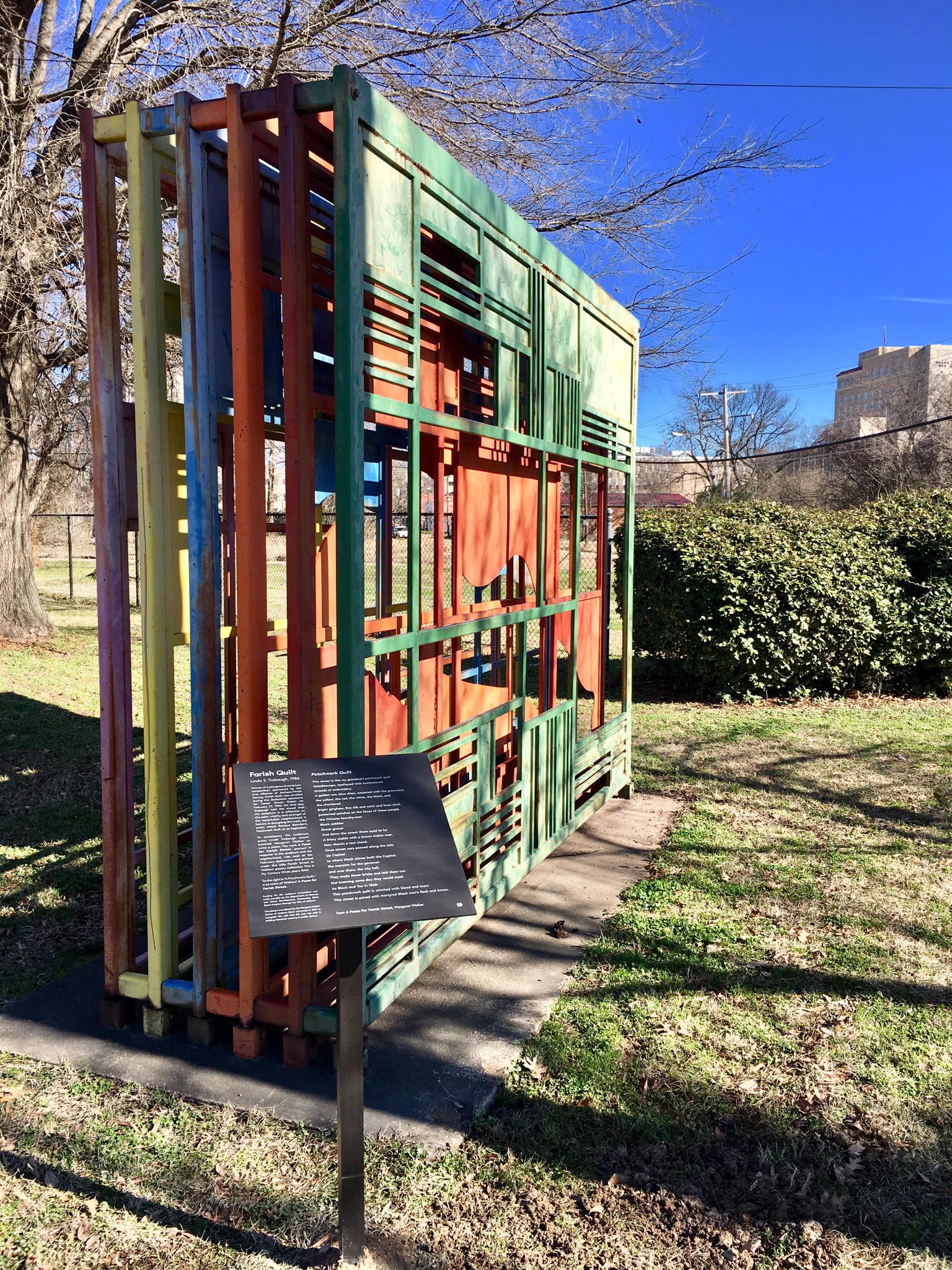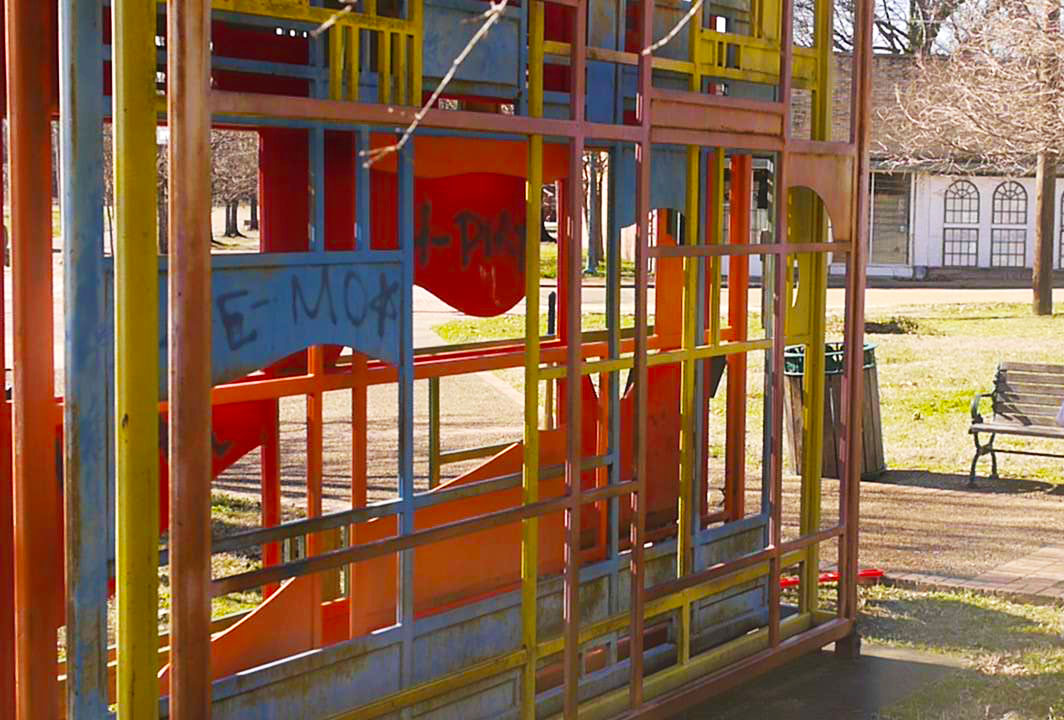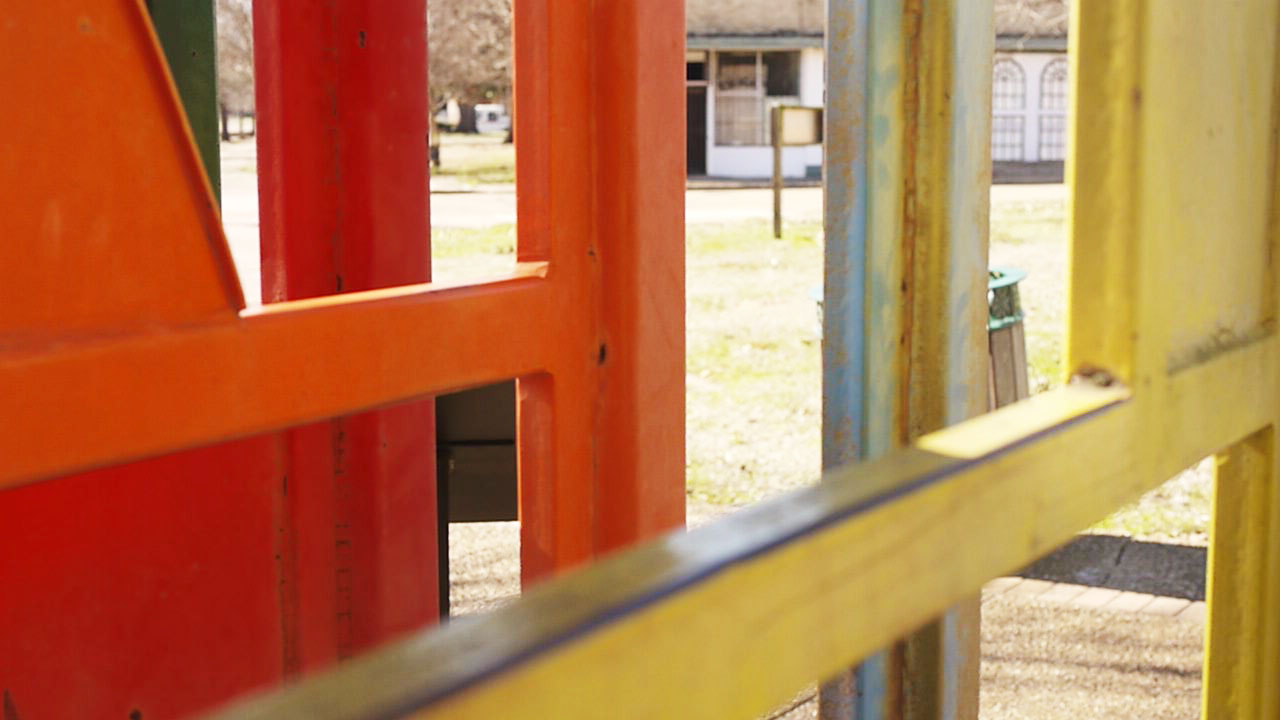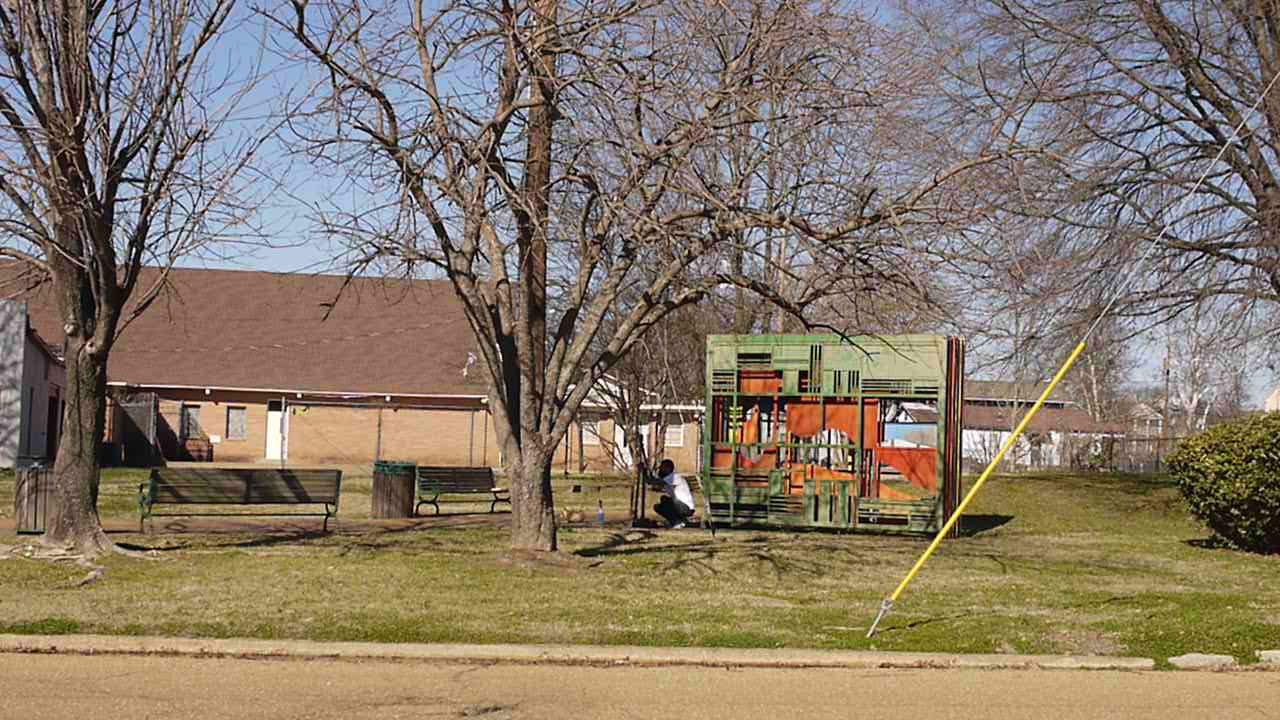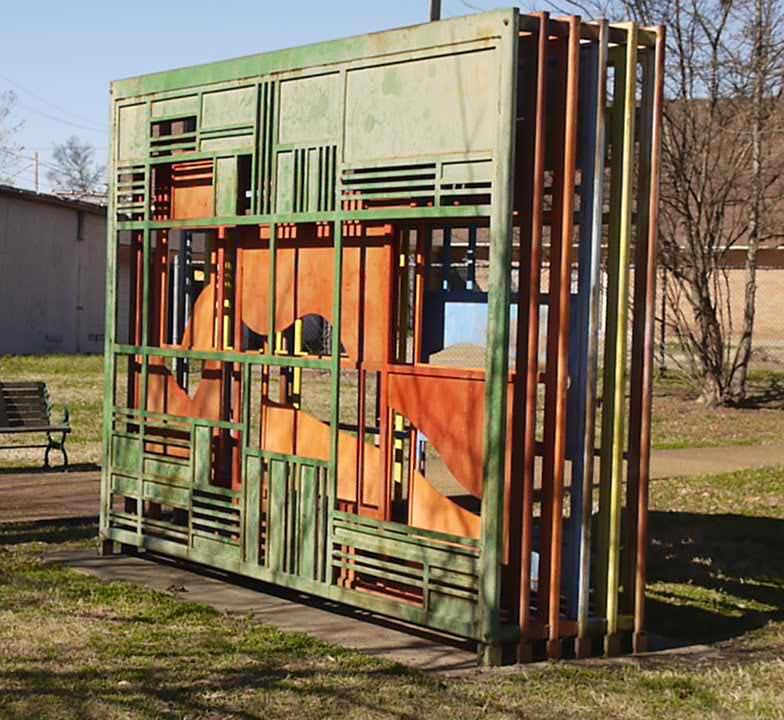Farish Street Research & Interpretation
In the lead up to the opening of the Mississippi Civil Rights Museum, the Museum partnered with the Margaret Walker Center at Jackson State University to commission independent place-based research projects engaging stories about Jackson, MS. For this project, johnson combed the archives of the Margaret Walker Center in search of a story which might be activated in some way, rather than simply told.
In 1986, the creation of Farish Street Park and this sculpture were intended to spark increased efforts to revitalize this historic Black business district. Established during Reconstruction, Farish Street became the largest economically independent Black community in Mississippi by the 1940’s. A short history called The Farish Street Project (produced by the Southern Foodways Alliance and The Southern Documentary Project) connects the beginning of decline for Farish Street to the end of Jim Crow Laws and passage of the 1964 Civil Rights Act citing white flight and the one-sided economic participation of black patrons at white businesses but not vice versa.

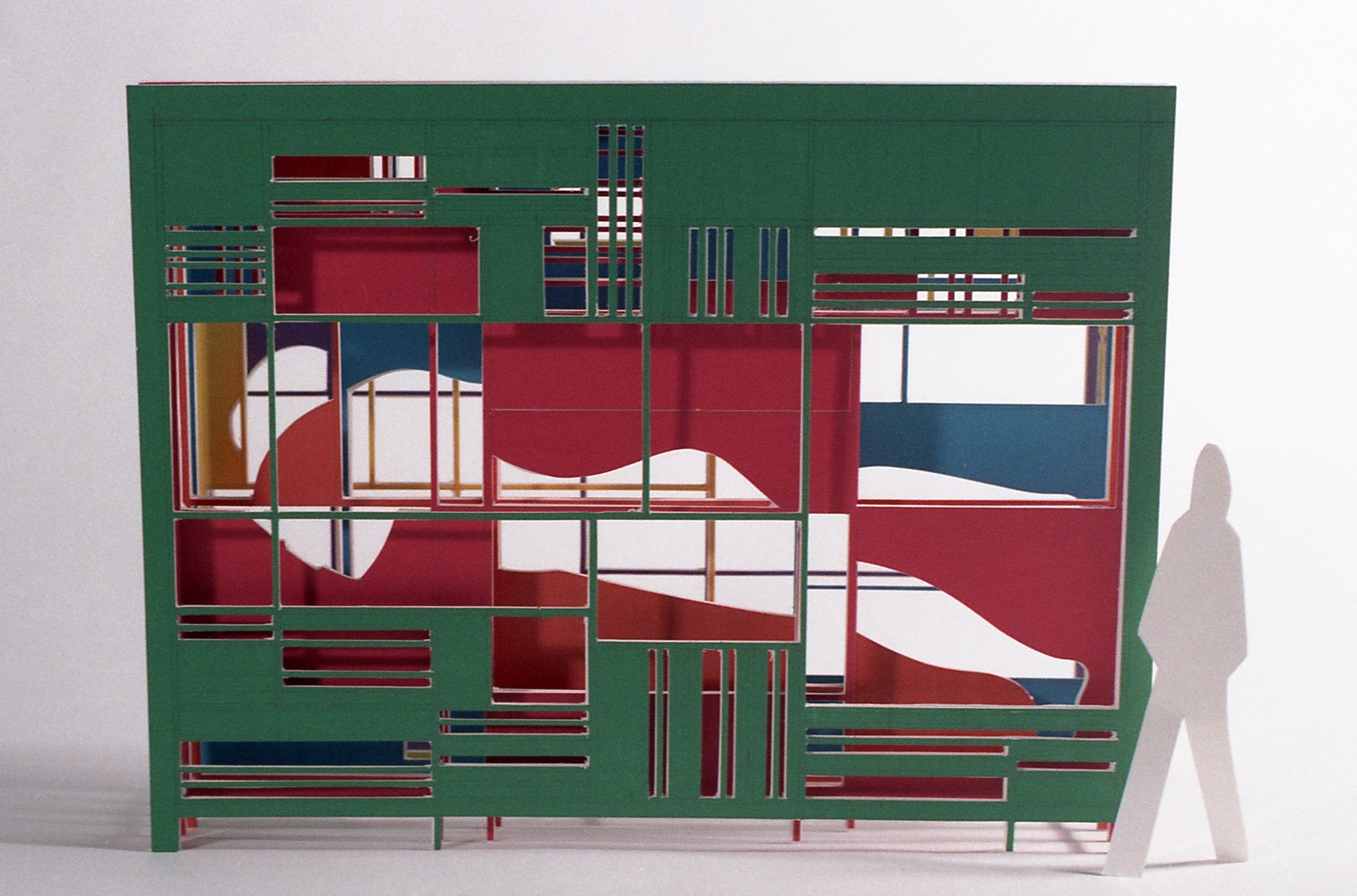
Running across a picture of the model for the public sculpture in the Margaret Walker archives, johnson immediately recalled this curious sculpture from driving through the district. johnson dug further, finding a small program from the unveiling ceremony for the sculpture, with a poem by Walker printed inside; A Poem for Farish Street. After taking in accompanying articles and letters from the archive and tracking down the artist for an interview, daniel felt that perhaps the most meaningful action would be to stitch the sculpture and its poem back together.
In 1985, artist Linda Trobaugh had been awarded a commission to create a “playground sculpture” for the opening of the park. Trobaugh then commissioned Walker to write a few lines of poetry she could print directly onto the sculture - but true to form, Walker wrote a set of discrete poems which taken together formed the work. Because it could not fit on the scultpure, it was printed in the unveiling press conference program and over time the connection between the two was lost. It was ultimately published in Walker’s 1989 book This is My Century.
Sitting uncared for by the city after all these decades, this public sculpture offers a consideration to all public beautification projects saddled with the grand intentions of a government revitalization effort. Public expressions of culture are necessary. Spaces to gather are necessary. Public investment in art and shared landscapes can increase a sense of shared ownership and belonging to ones geography. They can also dislocate that.
I appreciated finding a history behind this sculpture of a thoughtful process, a thoughtful artist, and a community of leaders who came out to support and celebrate its creation. It is a loss to the South that the City of Jackson and State of Mississippi has been unable or unwilling to create the space and extend the agency and resources necessary to follow on this initial gesture of public space with deep, systemic transformations led by the residents and extended community who are connected to Farish Street.
The Farish Street/Main Street Project, the Margaret Walker Center, and johnson came together to create an interpretive plaque and call community leaders back to that site of imagination in 1986. A few who participated at this 2017 unveiling had been at the first. Some organizations and churches who had participated originally were present with different people. There was remembering and there was speculation about the future. A moment was shared and a powerful piece of poetry written for the people of Farish Street was reconnected to its source.
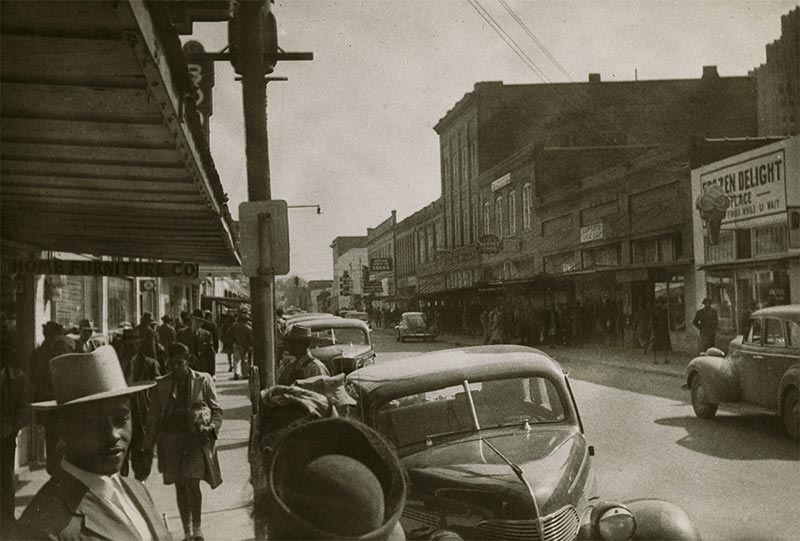





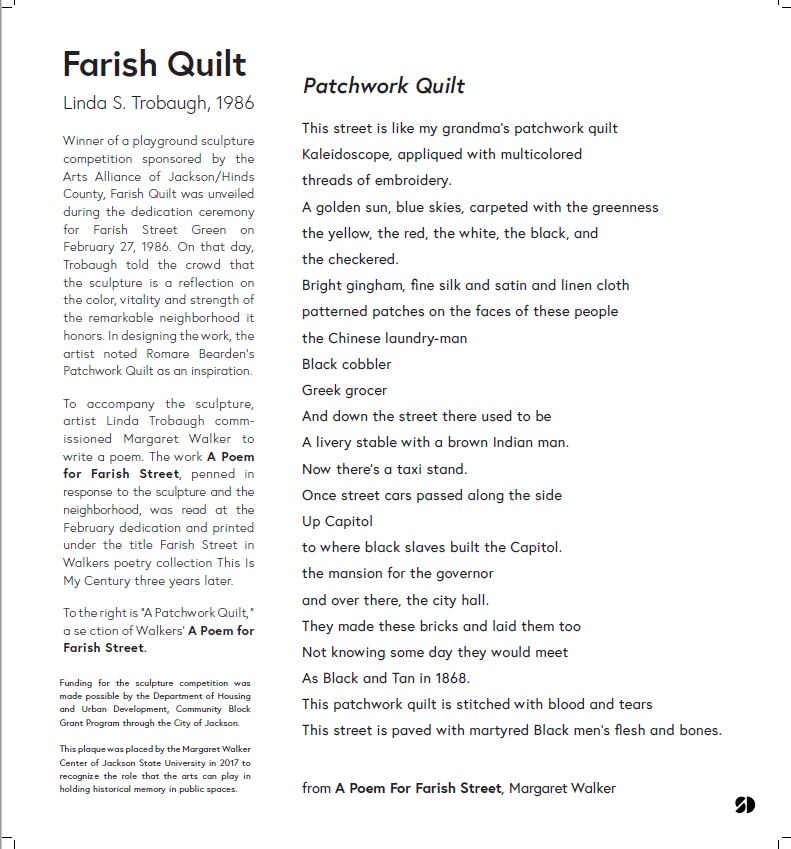

Participating in the program were Rev. CJ Rhodes of Mt. Helm Baptist Church; Dr. Robert Blaine, Chief Administrative Officer of the City of Jackson; Dorothy Davis, President of Farish Street Community of Shalom; Dr. Robert Smith, Chair of the Margaret Walker Center Advisory Board; Dr. helen crump of the Jackson State University Department of English; Rev. David McCoy of Central United Methodist Church on Farish Street; and Janet Scott, Executive Director of the Greater Jackson Arts Council whose precursor the Arts Alliance of Jackson/Hinds County sponsored the original sculpture competition which commissioned this public art work.
media
Jackson State Newsroom | March 2018
Margaret Walker Center to Unveil Interpretive Plaque in Farish Street Park
unveiling ceremony press release
small book produced for 1986 unveiling with A Poem for Farish Street
daniel@significantdevelopments.us — Jackson, Mississippi


